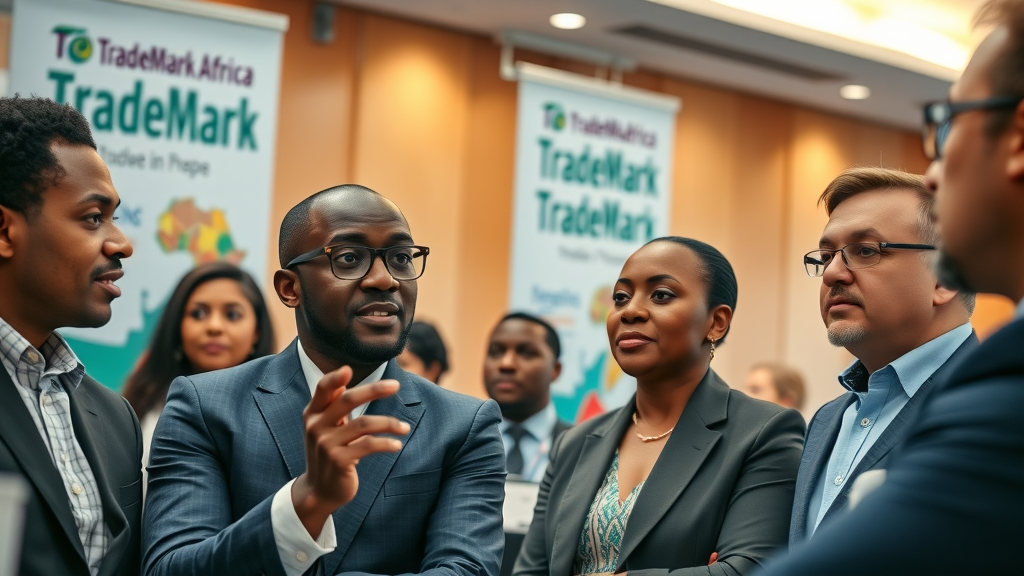**What drives intra-African trade?** This fundamental question not only emphasizes the importance of regional commerce but also highlights how organizations like TradeMark Africa (TMA) are pivotal in transforming the landscape of trade across the continent. This article delves into TMA's impactful role in promoting intra-African trade, shedding light on the organization's initiatives, challenges, and the broader implications for economic integration in Africa.
Opening Inquiry: What Drives Intra-African Trade?

Intra-African trade has been a significant focus for economists and policymakers, serving as a cornerstone for achieving economic resilience and sustainability. Factors driving **intra-African trade** include increased economic interdependence, improved infrastructure, technology advancements, and regional free trade agreements. Understanding these drivers lays the groundwork for assessing the contributions of organizations like TMA.
Overview of Intra-African Trade
Defining Intra-African Trade
**Intra-African trade** refers to the trade of goods and services among African countries. It is often seen as a means to reduce reliance on non-African markets and to stimulate local economies. The African Development Bank highlights that increasing this type of trade can significantly enhance economic growth for participating nations.

Current State of Intra-African Trade
The current state of **intra-African trade** is characterized by a lower-than-expected level of activity, with less than 20% of African countries' trade occurring within the continent. Several factors hinder this potential, including trade barriers, varying regulatory standards, and insufficient infrastructure. According to TMA, enhancing trade can result in multiple economic benefits, including job creation and poverty reduction.
TradeMark Africa's Role in Enhancing Trade
Key Initiatives by TradeMark Africa
Since its inception in 2010, TradeMark Africa has implemented key initiatives aimed at bolstering **intra-African trade**. These include improving trade facilitation measures, enhancing access to finance for SMEs, and fostering an environment conducive to business collaboration. TMA is actively involved in creating mechanisms that simplify customs processes, breaking down barriers that prevent smooth trade flows.
Impact on Regional Economic Integration

The impact of TMA on regional economic integration is profound. By streamlining trade corridors and reducing trade times by significant margins—like the 16.5% cut in cargo transit times on the Northern Corridor—TMA showcases how targeted interventions can yield measurable outcomes. Moreover, by fostering partnerships between public and private sectors, TMA enhances the overall trade ecosystem. For more insights on regional progress, visit Frontline News Channels Breaking News: Celebrating Progress Across East Africa.
Success Stories and Achievements
Reduction in Cargo Transit Times
One of the key success stories highlights TMA's initiative to reduce arterial cargo transit times across East Africa. This improvement not only demonstrates TMA’s commitment but also signifies potential economic savings for businesses and consumers alike.
Facilitating Trade for SMEs

TMA has made significant strides in facilitating trade for small and medium enterprises (SMEs). By providing access to trade financing and capacity building, TMA supports budding entrepreneurs looking to enter regional markets. The organization serves as a crucial link, ensuring that SMEs can navigate the complexities of **intra-African trade** effectively. Discover more about transformative leadership in the region at Footprints in Faith: The Leaders Transforming Lives Through Purpose.
Challenges Facing Intra-African Trade
Barriers to Trade and Economic Integration
Despite the positive strides made, challenges remain. High tariffs, non-tariff barriers, and bureaucratic inefficiencies continue to impede **intra-African trade**. Addressing these barriers requires concerted efforts from both regional bodies and individual governments to harmonize standards and regulations.

Addressing Trade Inequities
Furthermore, trade inequities pose significant hurdles. Larger economies often dominate intra-regional trade dynamics, leaving smaller nations at a disadvantage. Addressing these discrepancies is crucial for a balanced economic growth trajectory across the continent.
Expert Insights on Intra-African Trade
One of the key insights comes from **Andrew Mold**, a trade expert, who states, "Intra-African trade is crucial for economic resilience and growth, yet it remains underutilized." His perspective underscores the enormous untapped potential that still exists within the African markets.
Best Practices for Enhancing Trade
Implementing best practices for enhancing trade, such as investing in infrastructure, ensuring the adoption of digital tools, and fostering strong public-private partnerships, can significantly elevate **intra-African trade** levels.

Future Prospects for Intra-African Trade
The Role of Digitalization in Trade
The future of **intra-African trade** looks promising, particularly with the rise of digitalization. Technologies that facilitate trade transactions and communication are set to revolutionize the way businesses operate, allowing for more seamless and efficient exchanges.

Potential for Growth and Development
With TMA leading initiatives that emphasize sustainable practices in trade, there is potential for significant growth and development in the coming years. The strategic focus on enhancing trade infrastructure will be a game-changer for many African economies seeking regional alignment.
Key Takeaways
- **Intra-African trade** is vital for the continent's economic health and development. - TradeMark Africa plays a crucial role in enhancing trade by reducing barriers and facilitating support for SMEs. - Digitalization will reshape the future of trade in Africa, bridging gaps and fostering collaborations. - Continuous efforts to address challenges and inequities in trade are essential for sustainable economic growth.
Conclusion: The Path Forward for Intra-African Trade
In conclusion, the journey towards enhancing **intra-African trade** is complex but necessary for achieving the continent’s economic resilience. Organizations like TradeMark Africa are at the forefront, implementing necessary changes and paving the way for a future where regional trade flourishes. By addressing existing barriers and leveraging technology, the potential for intra-African trade growth is not just possible—it is inevitable.
People Also Ask
What is the meaning of intra-African trade?
**Intra-African trade** refers to the exchange of goods and services among African countries, promoting regional collaboration and economic interdependence.
What is an example of intra trade?
An example of intra trade includes the exchange of agricultural products between two neighboring African countries.
Why is intra-African trade so low?
Despite great potential, **intra-African trade** remains low due to barriers like high tariffs, bureaucratic processes, and varying regulations across countries.
What is the current state of intra-African trade?
The current state of **intra-African trade** reflects underutilization, with trade among African nations being under 20% of total trade.
Call to Action: Discover Trade Mark Africa
To learn more about how TradeMark Africa is transforming **intra-African trade** and to explore their initiatives, visit TradeMark Africa.
 Add Row
Add Row  Add
Add 






 Add Row
Add Row  Add
Add 

Write A Comment